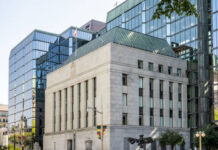The S&P500 (-0.44%) came off from its record highs following the Federal Reserve’s (Fed) reluctance to offer more guidance immediately. The minutes of the FOMC’s last meeting proved to be slightly less dovish than previously as policymakers noted that ‘providing greater clarity regarding the likely path of the target range for the federal funds rate would be appropriate at some point’, but not ‘at upcoming meetings’.
With stalemate in fiscal talks and no sign of more monetary stimulus in horizon, investors probably felt alone on top of a mountain. The US dollar gained, and the treasury yields slipped.
Asian markets were moody as well. Stock markets in Sydney (-0.77%), Shanghai (-1.08%), Hong Kong (-2.05%) and Tokyo (-1.0%) followed up on the US session losses.
WTI crude retreated almost 1% to $42.50 per barrel as OPEC reckoned that the pace of the global recovery appeared to be slower than they anticipated, pointing at the growing risks of a prolonged wave of Covid-19, but didn’t say much about production cuts, other than calling the laggards to compensate for their overproduction over the past months. Meanwhile, the EIA data showed that the US oil inventories declined 1.9 million barrels last week, less than penciled in by analyst. Worries of an increasingly swamped oil market due to solid supply and weakening demand prospects should keep the selling pressure tight near and above the actual levels. Inability to clear the $43 resistance should encourage a downside correction toward the $40 mark.
Activity on FTSE (-1.19%) and DAX futures (-1.33%) hint that the European equities are preparing for a dive on Thursday as a result of a global loss of risk appetite.
Oil and mining stocks will likely feel the pinch of global growth worries and softer oil and commodity prices.
In the FX, the US dollar continues dictating the overall direction.
The EURUSD and the GBPUSD gave back their early-week gains on the back of a global rebound in the US dollar. Provided the overstretched advance in both pairs, a deeper downside correction would only be healthy at the current levels.
Due today, the European Central Bank (ECB) meeting minutes should reiterate the bank’s dovish mindset but will unlikely hint at a further action in the immediate future. The 5y5y inflation swap rates show a significant uptick in inflation Euro area inflation expectations and more action is certainly not necessary right now. The 1.35-trillion-euro worth of pandemic asset purchases program (PEPP) will continue giving the necessary support to the market until the end of 2020, and we expect the purchases to run through the first half of 2021. The dovish minutes, already widely priced in, won’t necessarily have an easing effect on the euro. The single currency should continue following the lead of the US dollar, and may react to the latest PMI figures due Friday.
Cable, on the other hand, should re-test the 1.30 support on the back of an improved US dollar appetite. Breaking below this level should not be an issue for the pair, given that the pandemic and Brexit worries mostly justify a sterling depreciation against the US dollar.
Elsewhere, the Central Bank of Turkey (CBT) is expected to maintain the one-week repo rate unchanged at 8.25% at today’s monetary policy meeting. But the actual interest rate levels are no longer suitable given the rising pressure on the Turkish lira and the mounting inflation expectations. The CBT has been conducting alternative measures to ramp up the rates, but the latter won’t be sufficient as investors ask a clear hawkish adjustment in policy rates in the near future. Best possible outcome would be a surprise 50-75 basis point hike as an indication of compromise, or a clear message regarding a post-pandemic upside correction in the rates to sooth investors. Otherwise, the USDTRY should continue seeing support at and below the 7.20 mark for a further advance above the 7.50 handle.













